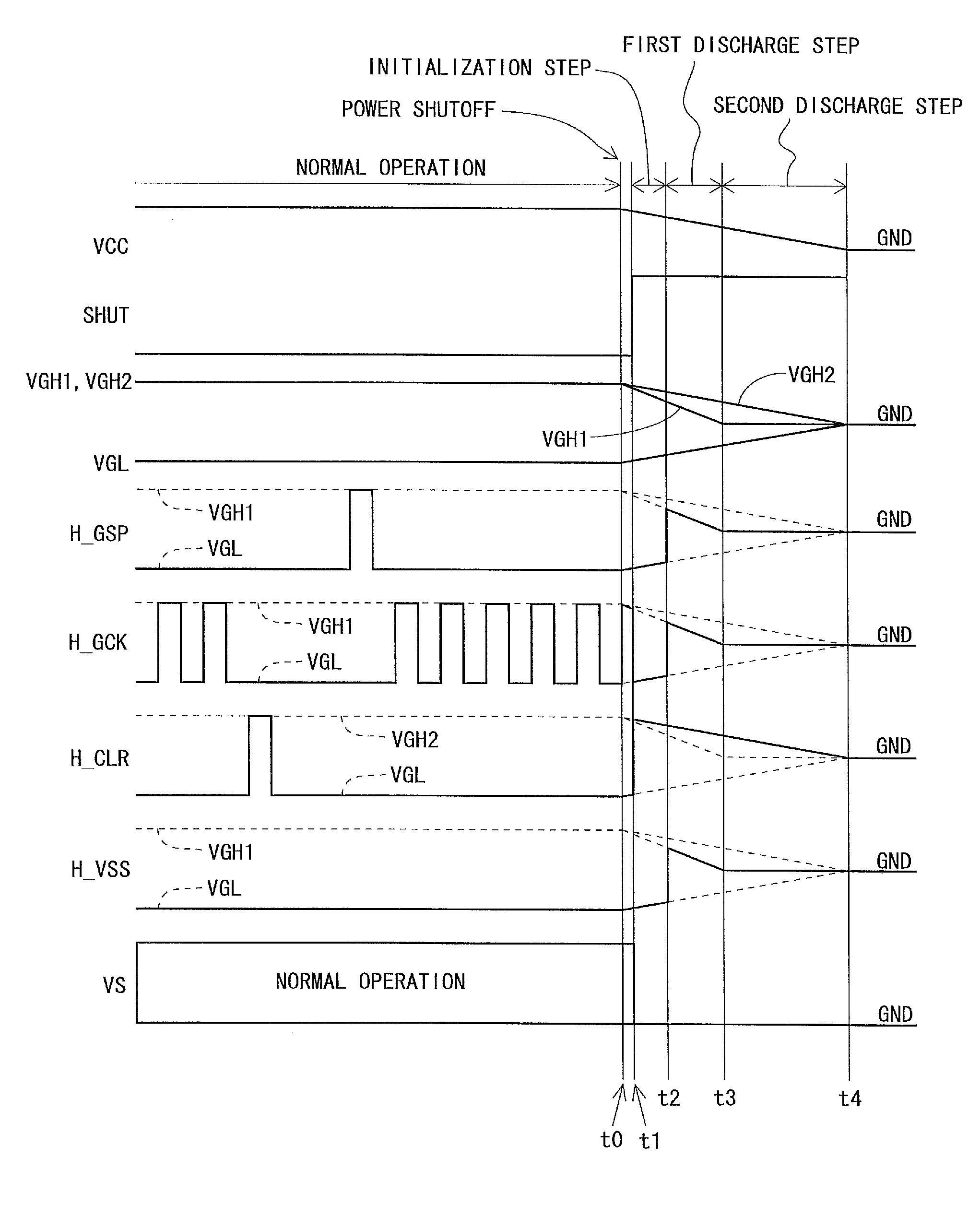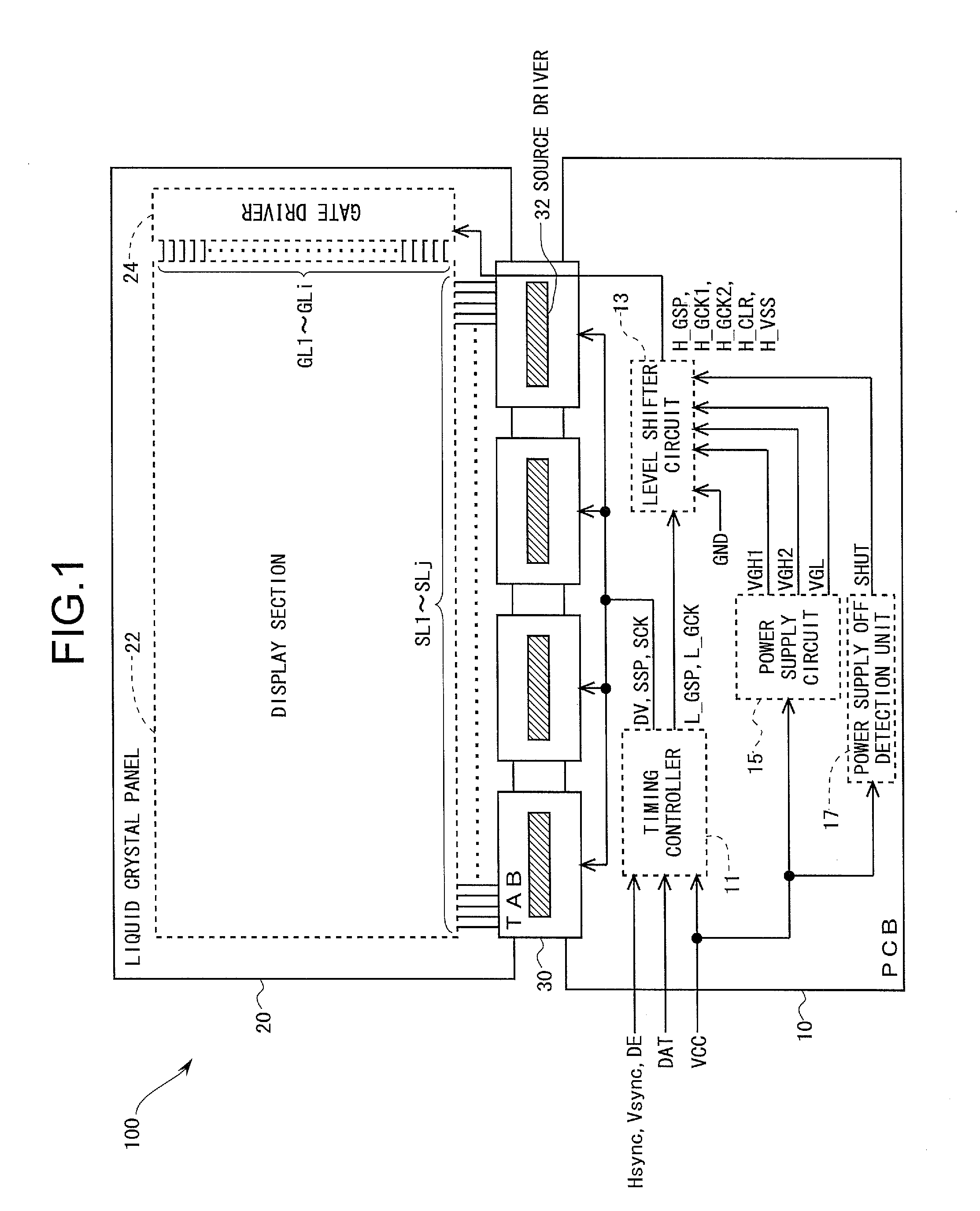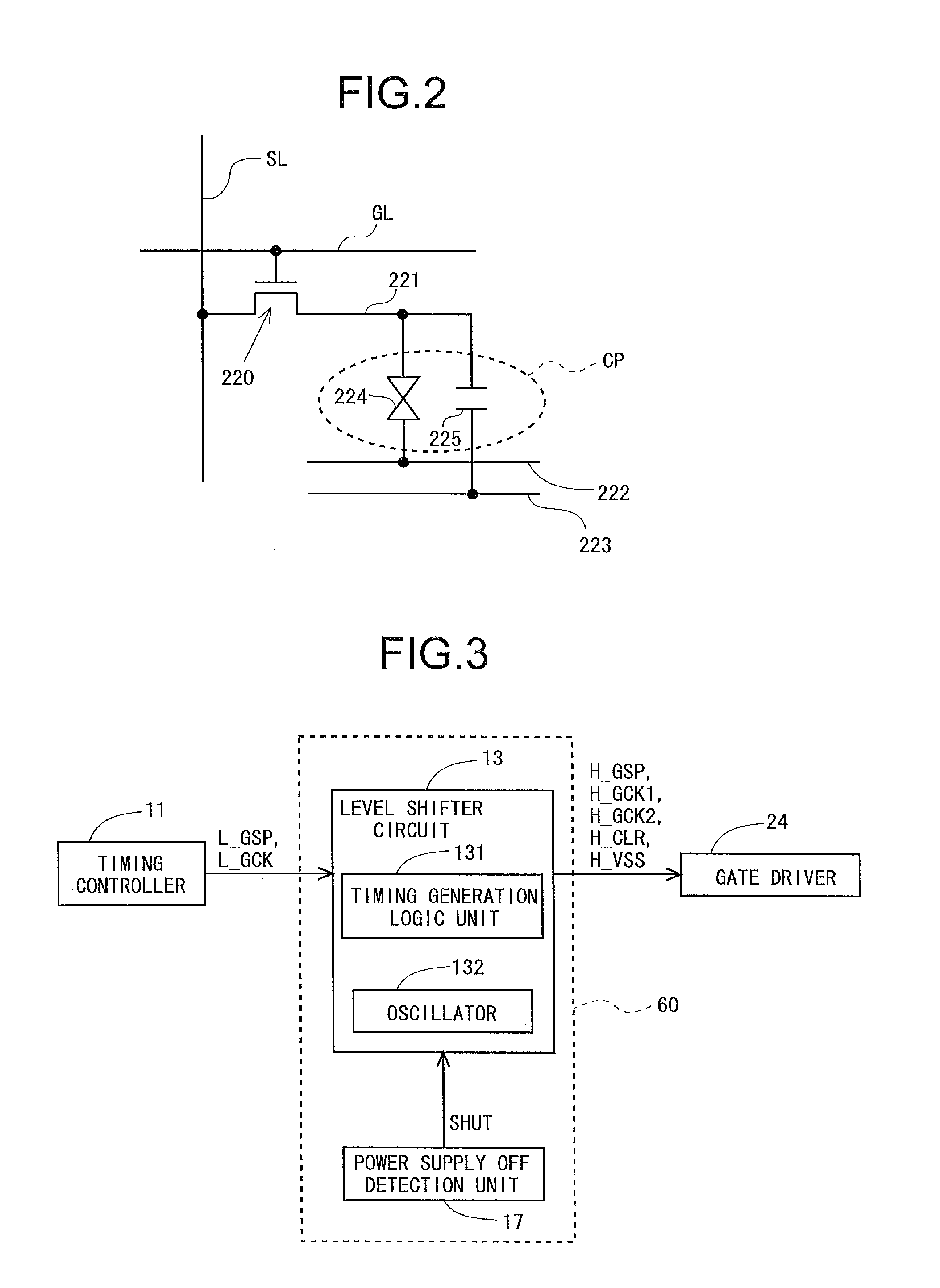Display device and method of driving the same
a technology of display device and drive device, which is applied in the direction of static storage, digital storage, instruments, etc., can solve the problems of affecting the display quality, so as to suppress the increase in power consumption, and remove the residual charge from inside the panel quickly and stably
- Summary
- Abstract
- Description
- Claims
- Application Information
AI Technical Summary
Benefits of technology
Problems solved by technology
Method used
Image
Examples
first embodiment
1. First Embodiment
1. 1 Overall Configuration
[0106]FIG. 1 is a block diagram which shows an overall configuration of an active matrix liquid crystal display device 100 according to the present embodiment. The liquid crystal display device 100 includes a printed circuit substrate (PCB) 10, a liquid crystal panel 20 as a display panel, and a tape automated bonding (TAB) tape 30 connected to the PCB 10 and the liquid crystal panel 20. The PCB 10 is provided with a timing controller 11, a level shifter circuit 13, a power supply circuit 15, and a power supply OFF detection unit 17. Further, the PCB 10 is also provided with an unillustrated discharge unit which will be described later, but this will not be covered while reference is made to FIG. 1. The liquid crystal panel 20 is provided by an IGZO-TFT liquid crystal panel. The TAB tape 30 is mounted with a source driver 32 in the form of an IC chip, for driving data lines SL1 through SLm. The TAB tape 30 is a package form of the source ...
second embodiment
2. Second Embodiment
2. 1 Discharge Unit
[0167]FIG. 14 is a block diagram for describing a configuration of a discharge unit 190 in a second embodiment according to the present invention. Constituent elements of the present embodiment which are identical with those in the first embodiment will be indicated by the same reference symbols, without repeating description thereof when appropriate. In the present embodiment, the discharge unit 190 includes a control switch 192 in series with the discharge resistor 191, in addition to the discharge resistor 191. In the present embodiment, the control switch 192 is between the discharge resistor 191 and a grounding line (see FIG. 14); however, it may be between the discharge resistor 191 and the wire OL. The control switch 192 is controlled based on a control signal DIS. The control signal DIS is generated by the level shifter circuit 13 for example. The control switch 192 opens when the control signal DIS is at HIGH level, i.e., the switch el...
third embodiment
3. Third Embodiment
3. 1 Normal Operation and Operation Upon Power Shut Down
[0170]FIG. 16 is a timing chart for describing a normal operation and an operation upon power shut down in the present embodiment. Constituent elements of the present embodiment which are identical with those in the first and second embodiments will be indicated by the same reference symbols, without repeating description thereof when appropriate. In the present embodiment, the discharge unit 190 is identical with the one in the second embodiment in its configuration. Referring to FIG. 16, assume that the second gate-on potential VGH2 is lower than the lower operation limit value at Time Point t3a. In the present embodiment, the control signal DIS assumes HIGH level when the second gate-on potential VGH2 is not lower than the lower operation limit value, while assuming LOW level when the second gate-on potential VGH2 is lower than the lower operation limit value. Thus, when the second gate-on potential VGH2 i...
PUM
 Login to View More
Login to View More Abstract
Description
Claims
Application Information
 Login to View More
Login to View More - R&D
- Intellectual Property
- Life Sciences
- Materials
- Tech Scout
- Unparalleled Data Quality
- Higher Quality Content
- 60% Fewer Hallucinations
Browse by: Latest US Patents, China's latest patents, Technical Efficacy Thesaurus, Application Domain, Technology Topic, Popular Technical Reports.
© 2025 PatSnap. All rights reserved.Legal|Privacy policy|Modern Slavery Act Transparency Statement|Sitemap|About US| Contact US: help@patsnap.com



